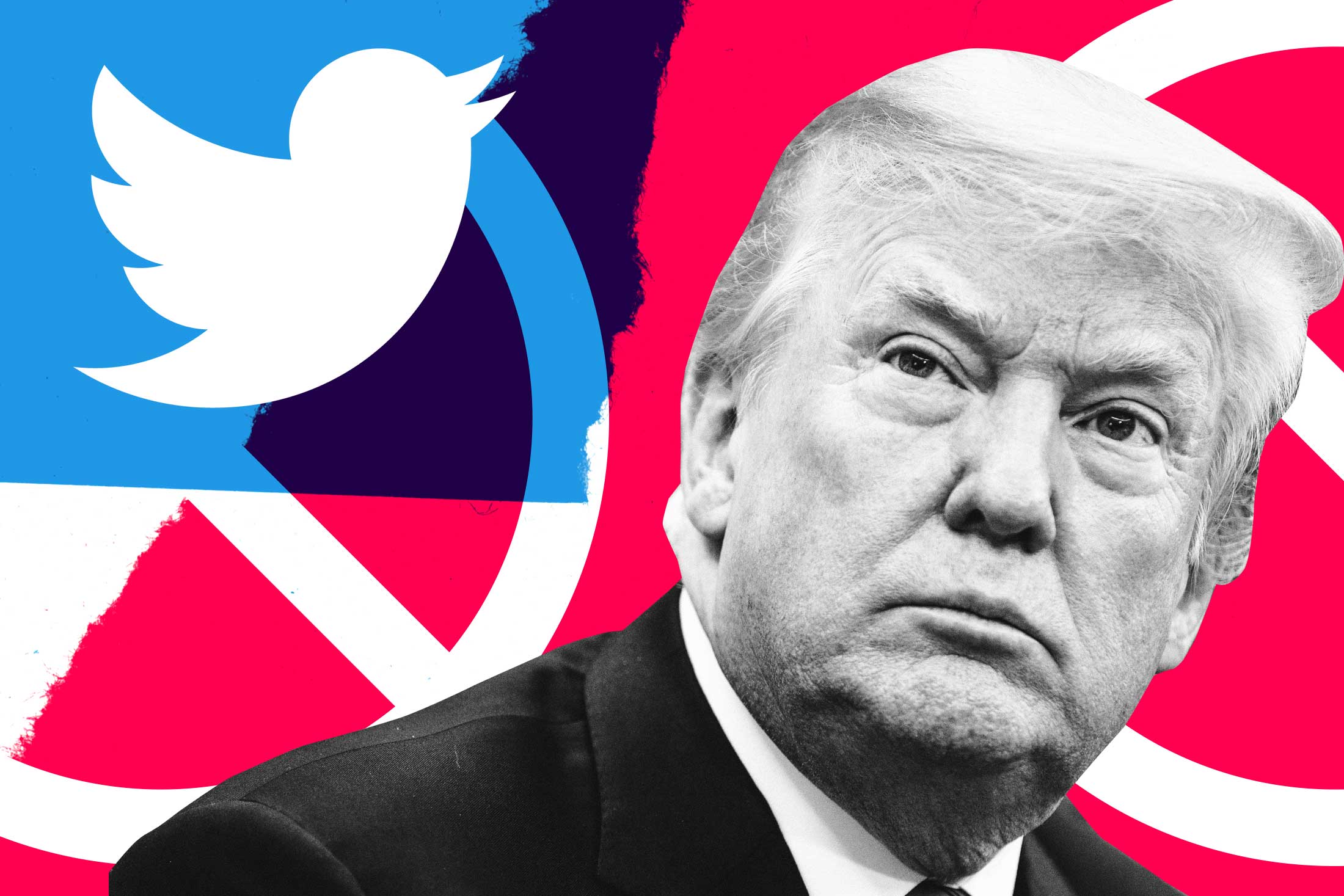On Wednesday, U.S. District Judge Naomi Reice Buchwald ruled that President Donald Trump violated the First Amendment by blocking Twitter users who criticized him and his policies. Her ruling is an extraordinary victory for free speech on the internet and a harsh rebuke to Trump’s effort to prevent his critics from engaging with him online. It also further confirms that @realDonaldTrump speaks not as a private citizen, but in his official capacity as the president of the United States.
Buchwald’s decision in Knight Institute v. Trump is quite literally unprecedented; only one other court has found that government officials may not block social media users because of their criticism, and that case involved Facebook, not Twitter. But despite the novel nature of the claim here, Buchwald’s ruling hews closely to established First Amendment principles. The facts of the case are straightforward. In July, the Knight First Amendment Institute at Columbia University sued Trump on behalf of multiple Twitter users whom the president blocked. It argued that Trump and Dan Scavino, his social media director, had infringed upon their free speech rights by denying them the ability to engage with Trump’s tweets.
To evaluate this claim, Buchwald first asked whether the plaintiffs’ speech is protected by the Constitution. Because “the individual plaintiffs seek to engage in political speech,” which lies at the heart of the First Amendment, she “readily conclude[d]” that their speech is, indeed, protected. Buchwald then asked a more difficult question: whether “the ‘interactive space’ where Twitter users may directly engage with the content of the President’s tweets” qualifies as a “designated public forum.”
This inquiry is vitally important because if that space is a public forum, then the First Amendment limits Trump’s ability to censor or exclude would-be participants. A designated public forum is a space that the government has opened to the public “as a place for expressive activity.” The space can be a physical location, but the Supreme Court has explained that it can also be a “metaphysical” space with no “physical situs.”
Buchwald found that “the interactive space for replies and retweets created by each tweet sent by the @realDonaldTrump account” qualifies as such a space. It is, after all, “generally accessible to the public at large,” and any Twitter user can follow, like, retweet, or reply to the account—“unless that person has been blocked.” Moreover, according to Scavino himself, Trump uses Twitter to “communicat[e] directly with you, the American people” about a wide variety of topics. He also uses it to conduct the business of the government. As Buchwald noted, the president has used his account to fire cabinet officials and attempt to ban transgender military service. Yet the blocked users were barred from interacting directly with these tweets from their personal accounts. Clearly, the “space” from which they’ve been shut out is a designated public forum frequently used for “expressive activity.”
That left one final question for Buchwald: By blocking certain users, did Trump engage in impermissible “viewpoint discrimination” within this public forum? “Indisputably,” Buchwald wrote; in fact, Trump’s lawyers stipulated precisely that. Each plaintiff was obviously “blocked as a result of viewpoint discrimination” after posting tweets critical of the president. And while Trump may have a right to mute users who irritate him, he may not lawfully block them. “The elimination of the blocked user’s ability to reply directly” to the president, Buchwald explained, limits that user’s “right to speak in a discrete, measurable way.” And the First Amendment flatly forbids the government from restricting “the right of an individual to speak freely [and] to advocate ideas” on the basis of their viewpoint in a designated public forum.
At this point, Buchwald could have issued an injunction ordering the president to unblock his blocked followers. Instead, the judge opted for “declaratory relief,” telling Trump and Scavino how to comply with the First Amendment rather than commanding them to do so. “Because no government official is above the law and because all government officials are presumed to follow the law once the judiciary has said what the law is,” she explained, “we must assume that the President and Scavino will remedy the blocking we have held to be unconstitutional.” (It’s an open question whether Trump will actually comply with this optimistic order; his lawyers will probably ask the 2nd Circuit U.S. Court of Appeals to stay the ruling while they ready an appeal.)
Buchwald’s First Amendment analysis seems quite right. Just last year, the Supreme Court extolled the expressive virtues of social media in Packingham v. North Carolina, a decision striking down, on free speech grounds, a North Carolina law that stringently curbed sex offenders’ access to the internet. On Twitter, the court noted, “users can petition their elected representatives and otherwise engage with them in a direct manner” and “engage in a wide array of protected First Amendment activity on topics as diverse as human thought.” The court described “the Cyber Age” as “a revolution of historic proportions” that may “alter how we think, express ourselves, and define who we want to be.”
The expression at issue in Knight Institute v. Trump may not alter how anybody thinks. But it involves vital political speech, nonetheless, in a forum that Trump routinely uses to conduct the business of government. He may mute pesky users, but he cannot, consistent with the Constitution, block users from engaging with his tweets on the basis of their political views. There’s no reason this well-established principle should not apply robustly to a president who has decided to make and enforce federal law through Twitter.
